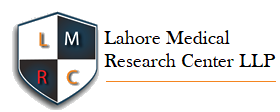Relationship between Fear of Pain and Movement among Stroke Patients with Poor Coordination
Relationship between Fear of Pain and Movement
DOI:
https://doi.org/10.54393/tt.v5i04.262Keywords:
Fear of Pain, Coordination, Fear Avoidance Beliefs, Stroke, Tempa Scale of KinesophobiaAbstract
Stroke is a major cause of long-term disability worldwide, often leading to motor impairments and reduced coordination. Beyond physical limitations, many stroke survivors experience psychological barriers such as fear of pain and movement, which can further hinder rehabilitation progress. Objectives: To determine the relationship between fear of pain and movement among stroke patients with poor coordination. Methods: This cross-sectional correlational study was conducted over four months at Ganga Ram Hospital, Lahore, involving 189 ischemic stroke patients aged 45–85 years, selected via convenience sampling. The Fear-Avoidance Beliefs Questionnaire (FABQ), Tampa Scale of Kinesiophobia (TSK), and Comprehensive Coordination Scale (CCS) were used (α=0.82 and α=0.79, respectively). Parametric analysis of summed ordinal scores was justified by prior studies and sample size. Pearson’s and Spearman’s correlation analyses were performed using SPSS version 26.0. Results: The study found moderate motor control difficulty among participants, with a mean CCS score of 14.52 ± 3.32. Fear-related avoidance behaviors were significant (FABQ: 37.29 ± 17.32), and fear of movement was moderate to high (TSK: 31.60 ± 11.85). FABQ showed a strong positive correlation with coordination (r = 0.773, p<0.001), while TSK had a strong negative correlation (r=-0.667, p<0.001). Interestingly, FABQ and TSK were inversely correlated (r =-0.787, p<0.001), indicating distinct psychological constructs. Conclusions: Higher fear-avoidance beliefs and kinesiophobia were both associated with poorer coordination in stroke patients. Despite overlap, FABQ and TSK reflect distinct aspects of pain avoidance and fear of movement, respectively.
References
Heran M, Lindsay P, Gubitz G, Yu A, Ganesh A, Lund R, et al. Canadian Stroke Best Practice Recommendations: Acute Stroke Management, Practice Guidelines Update, 2022. Canadian Journal of Neurological Sciences. 2024 Jan; 51(1): 1–31. doi: 10.1017/cjn.2022.344.
Feigin VL, Brainin M, Norrving B, Martins S, Sacco RL, Hacke W, et al. World Stroke Organization (WSO): Global Stroke Fact Sheet 2022.International Journal of Stroke. 2022 Jan; 17(1): 18–29. doi: 10.1177/17474930211065917.
Absher J, Goncher S, Newman-Norlund R, Perkins N, Yourganov G, Vargas J, et al. The Stroke Outcome Optimization Project: Acute Ischemic Strokes from a Comprehensive Stroke Center. Scientific Data. 2024 Aug; 11(1): 839. doi: 10.1038/s41597-024-03667-5.
Kuriakose D and Xiao Z. Pathophysiology and Treatment of Stroke: Present Status and Future Perspectives. International Journal of Molecular Sciences. 2020 Oct; 21(20): 7609. doi: 10.3390/ijms21207609.
Zhang B, Kan L, Dong A, Zhang J, Bai Z, Xie Y, et al. The Effects of Action Observation Training on Improving Upper Limb Motor Functions in People with Stroke: A Systematic Review and Meta-analysis. Public Library of Science One. 2019 Aug; 14(8): e0221166. doi: 10.1371/journal.pone.0221166.
Anwer S, Waris A, Gilani SO, Iqbal J, Shaikh N, Pujari AN, et al. Rehabilitation of Upper Limb Motor Impairment in Stroke: A Narrative Review on the Prevalence, Risk Factors, and Economic Statistics of Stroke and State-of-the-Art Therapies. Healthcare. 2022 Jan; 10(2): 190. doi: 10.3390/healthcare10020190.
Nogueira NGDHM, Parma JO, de Assis Leão SES, de Souza Sales I, Macedo LC, Galvao ACDR, et al. Mirror Therapy in Upper Limb Motor Recovery and Activities of Daily Living, and Its Neural Correlates in Stroke Individuals: A Systematic Review and Meta-analysis. Brain Research Bulletin. 2021; 177: 217–238. doi: 10.1016/j.brainresbull.2021.10.003.
Li S, Gu HQ, Li H, Wang X, Jin A, Guo S, et al. Reteplase Versus Alteplase for Acute Ischemic Stroke. New England Journal of Medicine. 2024 Jun; 390(24): 2264–2273. doi:10.1056/NEJMoa2400314.
Kim WS, Cho S, Ku J, Kim Y, Lee K, Hwang HJ, et al. Clinical Application of Virtual Reality for Upper Limb Motor Rehabilitation in Stroke: Review of Technologies and Clinical Evidence. Journal of Clinical Medicine. 2020 Oct; 9(10): 3369. doi:10.3390/jcm9103369.
Leslie-Mazwi TM. Neurocritical Care for Patients with Ischemic Stroke.Continuum: Lifelong Learning in Neurology. 2024 Jun; 30(3): 611–640. doi: 10.1212/CON.0000000000001427.
Ellis MD, Lan Y, Yao J, Dewald JP. Robotic Quantification of Upper Extremity Loss of Independent Joint Control or Flexion Synergy in Individuals with Hemiparetic Stroke: A Review of Paradigms Addressing the Effects of Shoulder Abduction Loading. Journal of NeuroEngineering and Rehabilitation. 2016 Oct; 13(1): 95. doi: 10.1186/s12984-016-0203-0.
Ellis MD, Schut I, Dewald JP. Flexion Synergy Overshadows Flexor Spasticity During Reaching in Chronic Moderate to Severe Hemiparetic Stroke. Clinical Neurophysiology. 2017 Jul; 128(7): 1308–1314. doi: 10.1016/j.clinph.2017.04.028.
Sarraj A, Hassan AE, Abraham MG, Ortega-Gutierrez S, Kasner SE, Hussain MS, et al. Endovascular Thrombectomy for Large Ischemic Stroke Across Ischemic Injury and Penumbra Profiles.JAMA. 2024 Mar; 331(9): 750–763.
O'Rourke C, Edwards D. The Effectiveness of the Motor Relearning Program on Upper Limb Function Post-stroke: A Systematized Review.Physical Therapy Reviews. 2024 May; 29(1–3): 87–100. doi: 10.1080/10833196.2024.2362045.
Connell LA, Chesworth B, Ackerley S, Smith MC, Stinear CM. Implementing the PREP2 Algorithm to Predict Upper Limb Recovery Potential After Stroke in Clinical Practice: A Qualitative Study.Physical Therapy. 2021 May; 101(5): pzab040. doi: 10.1093/ptj/pzab040.
Saito H, Sato M, Kobayashi M, Saito T, Shimura T, Yotsumoto K, et al. Predictors of Life-space Mobility in Patients with Fracture 3 Months After Discharge from Convalescent Rehabilitation Ward: A Prospective Longitudinal Study.Journal of Physical Therapy Science. 2023; 35(3): 223–229. doi: 10.1589/jpts.35.223.
Nguyen PT, Chou LW, Hsieh YL. Proprioceptive Neuromuscular Facilitation-based Physical Therapy on the Improvement of Balance and Gait in Patients with Chronic Stroke: A Systematic Review and Meta-analysis.Life. 2022 Jun; 12(6): 882. doi: 10.3390/life12060882.
Veldema J, Gharabaghi A. Non-invasive Brain Stimulation for Improving Gait, Balance, and Lower Limbs Motor Function in Stroke.Journal of NeuroEngineering and Rehabilitation. 2022 Aug; 19(1): 84. doi: 10.1186/s12984-022-01062-y.
Adlı H, Talu B. Is the Cause of Kinesiophobia in Stroke Patients Pain, or Is It Due to a Lack of Postural Control, the Affected Side, and Depression? Turkish Journal of Neurology. 2025; 31(1): 025–033.
Chen X, Yang X, Li Y, Zhang X, Zhu Y, Du L, et al. Influencing Factors of Kinesiophobia Among Stroke Patients with Hemiplegia: A Mixed Methods Study. Clinical Neurology and Neurosurgery. 2024 May; 240: 108254. doi: 10.1016/j.clineuro.2024.108254.
Oguz S, Demirbuken I, Kavlak B, Acar G, Yurdalan SU, Polat MG. The Relationship Between Objective Balance, Perceived Sense of Balance, and Fear of Falling in Stroke Patients. Topics in Stroke Rehabilitation. 2017 Oct; 24(7): 527–532. doi: 10.1080/10749357.2017.1322251.
Özden F, Özkeskin M, Ezgin BD, Karaman B, Şirin H, Başer M. Evaluation of Exercise Barriers-benefits, Kinesiophobia, Fear of Falling, Balance Confidence and Psychosocial Status in Individuals Post Stroke. Physiotherapy Theory and Practice. 2025 Jun; 27: 1–9. doi: 10.1080/09593985.2025.2524464.
Akosile C, Jachike EC, Mgbeojedo UG, Okoye EC, Fabunmi AA, Ndukwe JO. Physical Activity, Fear of Falling, and Quality of Life Among Older Adults Using and Not Using Assistive Mobility Devices. Nigerian Journal of Physiotherapy and Rehabilitation. 2020; 1(1).
Nakao M, Izumi S, Yokoshima Y, Matsuba Y, Maeno Y. Prediction of Life Space Mobility in Patients with Stroke 2 Months After Discharge from Rehabilitation: A Retrospective Cohort Study. Disability and Rehabilitation. 2020; 42(14): 2035–2042. doi: 10.1080/09638288.2018.1550533.
Tashiro H, Isho T, Takeda T, Nakamura T, Kozuka N, Hoshi F. Life-space Mobility and Relevant Factors in Community-dwelling Individuals with Stroke in Japan: A Cross-sectional Study. Progress in Rehabilitation Medicine. 2019; 4: 20190014. doi: 10.2490/prm.20190014.
Downloads
Published
How to Cite
Issue
Section
License
Copyright (c) 2024 THE THERAPIST (Journal of Therapies & Rehabilitation Sciences)

This work is licensed under a Creative Commons Attribution 4.0 International License.
This is an open-access journal and all the published articles / items are distributed under the terms of the Creative Commons Attribution License, which permits unrestricted use, distribution, and reproduction in any medium, provided the original author and source are credited. For comments editor@thetherapist.com.pk










